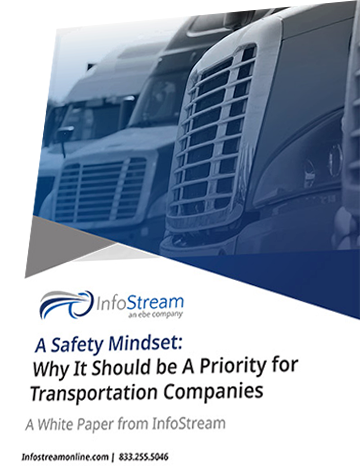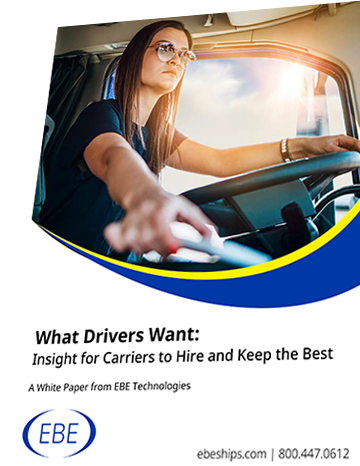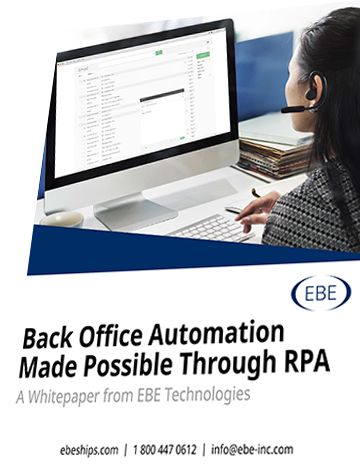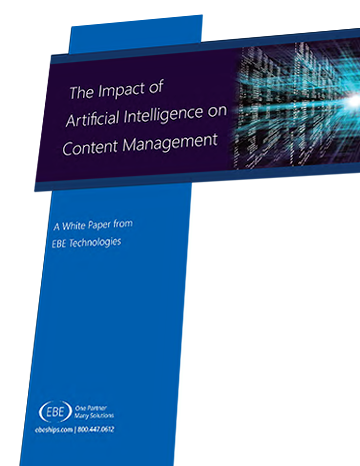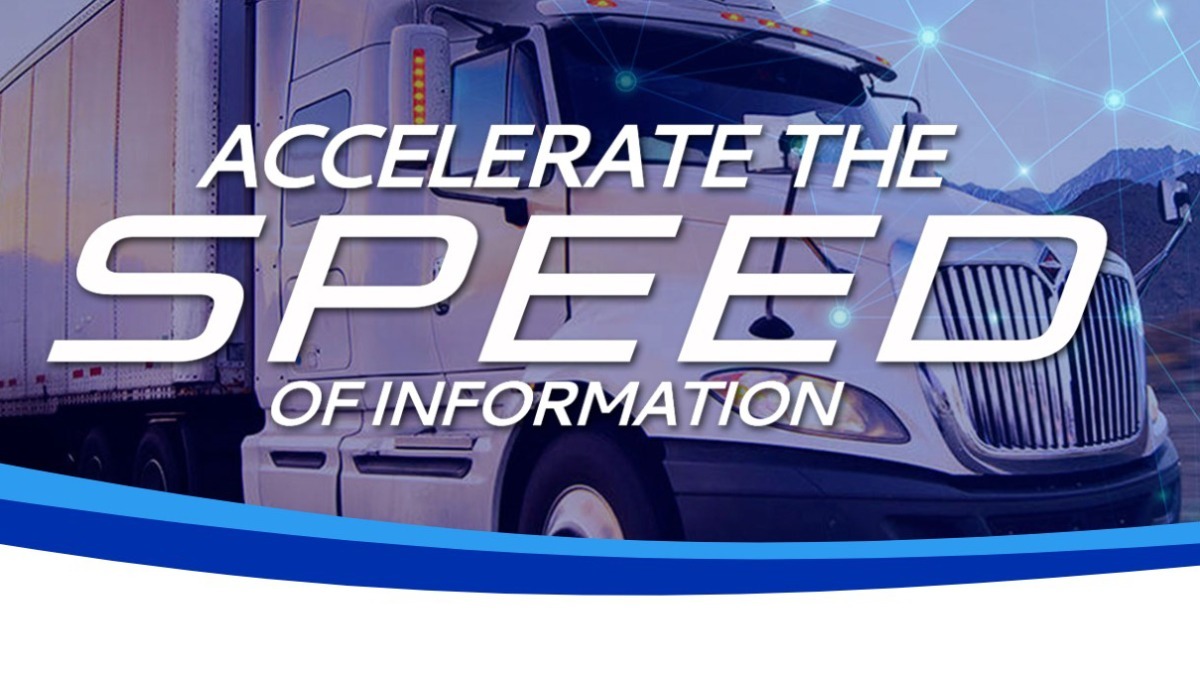
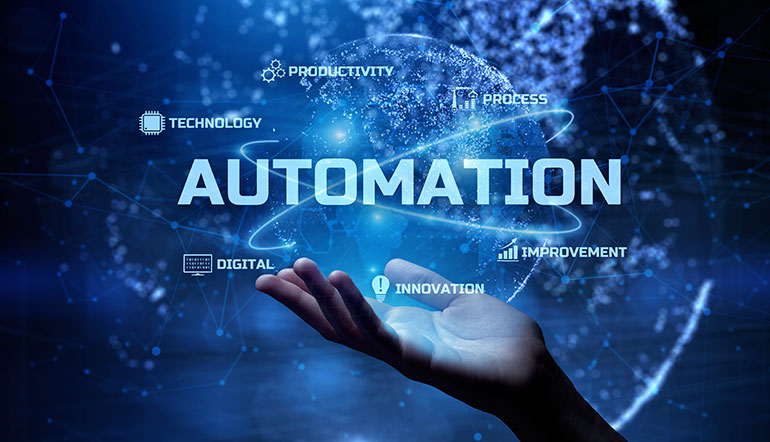
By Larry Kerr
President EBE Technologies
Decades ago, robotics were introduced into the manufacturing segment of the economy to reduce costs, reliance on human labor, and improve the quality of goods being produced. Humans have the intellectual ability to create solutions that eliminates their imperfections. The same type of automation is being deployed in the services sector to process data.
Today’s work environment, and the preference or mandate to work remotely, have made it difficult to maintain staffing levels to ensure back-office business functions are being completed in a timely fashion to meet the needs of shippers and drivers.
Many times, positions in the back office are data entry intensive. Back-office staff must be trained to use disparate systems that lack integration causing a duplication of effort and extended learning curves. This issue is compounded in a remote working environment.
In some cases, personnel who are not cross trained, are not fully utilized labor because they are waiting for specific events to occur to perform their specific duties. In these cases, the carrier is not realizing the full value of the labor spend.
In some cases, carriers are prioritizing back-office functions to include the billing and driver settlements and accounts payable as baseline financial functions. Activities such as collections, assessorial recovery, short pay, and status updates into a shipper’s web portal becomes fill-work, leading to increased customer services failures and additional pressure on the back-office staff. The result is a continued train-and-replace cycle in the human resources department.
EBE’s approach to back-office automation includes proactive workflows and Artificial Intelligence (AI) to provide data to Robotic Process Automation (RPA) solutions to automate repetitive tasks currently performed by a carrier’s back-office staff. EBE’s RPA solutions become a carrier’s electronic workforce that processes transactions 24/7 while adhering to a carrier’s standards.
Transactions that AI deems to be out of standard are placed in a workflow for the carrier’s back-office staff to resolve. The built-in combination of AI and RPA allow the carrier to maintain a back-office staff at a level required to resolve out-of-standard transactions. This ability significantly reduces labor costs and time to resolve such transactions.
RPA solutions within the back office include Invoice Billing, Driver Settlement, Assessorial Recovery, Collections, Invoice Resolution/Short Pay, Accounts Payable, Shipper Web-Portal Updates and Rate Contract Management. RPA can also be used out of the back-office automation processes to address a myriad of useful, time-saving, and repetitive automated processes.
Traditionally, data entry is performed by keying data into the back-office system purchased from the supplier. Data entry activity represents a significant labor expense for back-office staff who are not administrators. The data entry process requires training on the specific interface of each system, which extends the training time, and in some cases, creates a “specialist” on a given system limiting the utilization of the labor cost to a specific system.
Through EBE’s SHIPSMobile solution, OCR begins at the time of delivery, when the driver captures the delivery document. The file is then placed in a verification solution, which is an intuitive interface that allows an individual without training on the back-office system to verify that the OCR read the required data correctly. Any handwritten information on the document is entered manually by the staff person.
The OCR system is cloud based, which allows access without special networking such as a VPN. The cloud provides the carrier the availability for remote workers to verify data by simply providing log-in credentials. The OCR process provides better utilization of labor utilization percentage, eliminates “specialists” for specific back-office applications, and greatly reduces the delivery to invoice cycle.
The OCR system can be applied to other document types contained in the SHIPSMobile solution. Roadside inspection, fuel receipts, and other documents are processed through OCR. Now, night dispatchers, CSR or other personnel with downtime can contribute to the data entry function.
For AI to have the capability to determine which transactions are within standard and may be processed through RPA and those that need to be manually reviewed, requires the knowledge as how to integrate into specific back-office systems and how the data is related between disparate back-office solutions.
Through AI, data updated in one system can be updated in other systems, eliminating the need to perform duplicate data entries, and decreasing the possibility of mistakes. For example, decisions such as required documents for a move were completed by an owner operator, company driver or an outsource asset must be determined programmatically for AI to be affective.
EBE has developed all the integrations that are required for the AI engine to determine the status of a transaction within a carrier’s back-office system. This process allows EBE to add functionality based on new releases or API functions provided by the back-office supplier. EBE does not have to wait for a third-party integrator to provide services based on their release schedules. This capability provides EBE greater control over product direction and a better customer experience.
Back-office automation using AI and RPA allows carriers to utilize an electronic workforce, with staff back-office personnel only processing out-of-standard transactions. They can retain drivers through improved settlement processing, gain better utilization of current labor costs, minimize back-office systems specialists, and gain easier access to a remote workforce. Back-office automation will also drive down labor costs and improve profitability by having staff look for revenue leaks such as short pays and assessorial expense recovery.




